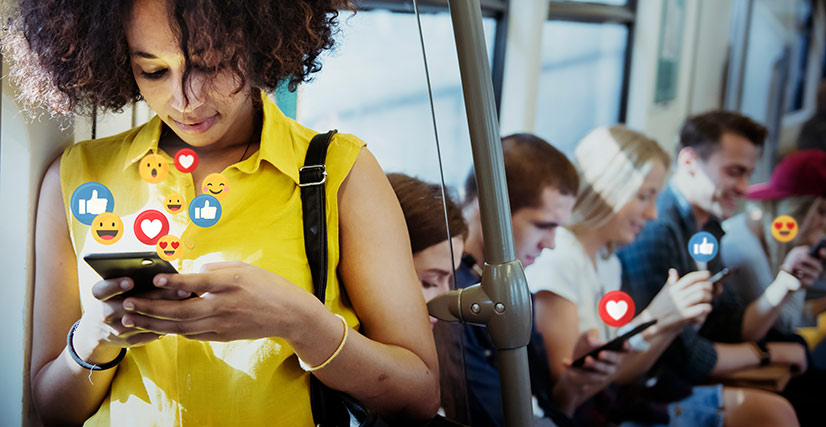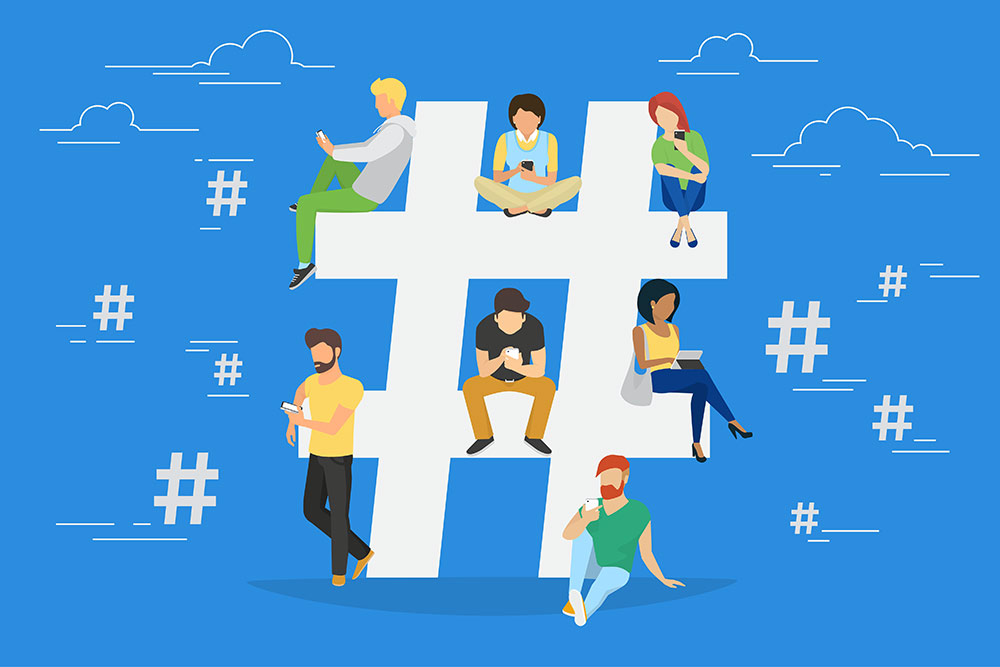How to Use Hashtags on Every Platform

For brand promotion on social media, hashtag usage is fundamental for success. The hashtag is basically just the pound sign. It’s used to make your content more discoverable online (as long as you use it correctly, more on that later).
Hashtags first gained popularity on Twitter but are now widespread on every social media platform, the main ones being Pinterest, LinkedIn, Instagram, and Facebook. Learning the art of using hashtags will give you the tools you need to engage your audience and increase your social media reach without costing you a dime. The only cost will be the time that it takes you to learn how to use hashtags on each platform, and then it’s just paying attention to what’s currently trending.
So, when you use hashtags correctly, they will help people that are interested in your topic discover what you’re posting about it, thus expanding your influence and following online.
Defining the Hashtag
A hashtag can be any word placed after the pound sign. However, it’s more effective to put a keyword phrase after the pound sign. A keyword is something that people are currently searching for, so it makes sense to do some research on the best keywords before starting a hashtag campaign. Hashtags can be misused and ruin your image, so it’s essential first to know how to use hashtags to boost your business. When done correctly, hashtags can allow you to draw more attention to your posts and to create more interaction on your pages.
When you use a keyword or phrase as a hashtag, you do it like this: #howtousehashtags. Notice that there are no spaces. Your hashtag can include numbers but cannot contain punctuation or symbols. As for where to put your hashtag, you can put it in the beginning, middle, or end of your post. You can also write comments that include your hashtag. By using hashtags, what you’ve written becomes indexed by the social media website, so that whenever someone there searches for that keyword, your stuff will show up for them. The main advantage of hashtags is that it allows people who aren’t currently part of your social media circle to find out who you are. They can then become potential followers.
The Basics of Hashtags
You are placing a pound sign before your keyword to create a hashtag. While the idea might sound simple enough, there are still more basics that you need to be aware of before trying to be discovered with your hashtags.
Hashtags can only benefit your marketing strategy IF you do it the right way. So, here are some essential tips to remember on how to use hashtags across all social media networks:
- Don’t go overboard with using another hashtag every couple of words.
- Make your hashtags as short as possible while still being memorable instead of trying to fit in many words in one tag.
- Don’t try to come up with something unique or clever. The whole point of using hashtags is to be more discoverable online, which isn’t going to happen if no one is searching for your hashtag!
- However, short doesn’t mean broad. Your hashtag should be as detailed and specific as possible while still being something your target audience would search for.
- You shouldn’t try to force hashtags into every post – that won’t come across very well. Rather, you should only use them when they can add value to your post. Value can mean having the potential to drum up conversation and interactions on your post.
- Hashtags have another use besides attracting your target audience. They can also be used to research your competition. Simply search for your own hashtag, and you’ll find content related to your topic popping up. This content will likely belong to your competitors.
Hashtag Research
Before you start using random hashtags in your posts, be sure to do your research. Hashtag research is key to finding your audience and getting your posts in front of the right people.
Here are some basic steps to performing your research:
- Create a spreadsheet with these categories
- Hashtag, Size, Size Category, Topic, and Experience
- Start by researching hashtags you use most often or hashtags that pertain to your business, services, or products and fill in each category.
- Size refers to the size of the hashtag, on Instagram you will see this at the top of the search page.
- Each size has a different category, as follows:
- Tiny – Less than 25K
- Small – 25 – 50K
- Medium – 50 – 100K
- Large – 100 – 999K
- Gigantic – 1M and above
- Fill in the topic with just that, the topic in which the hashtag falls (ie. Social Media Tips, Website Stats, etc.)
- Lastly, if any of your posts show up on the page when searching that hashtag make note of it under Experience.
- Continue this process moving through business hashtags as well as researching what your competitors and target audience use and search for.

Facebook Hashtags
On this network, it’s especially important not to overdo it on hashtags. It’s generally recommended to use only one or two specific hashtags on this platform. Going higher than that will make you look unprofessional and annoy other users.
Twitter Hashtags
For Twitter, one or two hashtags per tweet are acceptable. Also, when you use a couple of hashtags and then ask your followers to retweet, this will bring you even more engagement. For the most significant impact on this network, research the trending hashtags. The best tool for researching Twitter trends, specifically, is Twitonomy.
Pinterest Hashtags
On Pinterest, you should use one or two hashtags that are relevant to your topic. Broad terms are mostly ineffective on this platform. On the other hand, unique or specific hashtags pertinent to your topic work exceptionally well here.
Linkedin Hashtags
Hashtags haven’t always been emphasized on LinkedIn, but that’s changing. Today it’s now acceptable to use 1-3 hashtags in your long-form content posts. On LinkedIn, where networking is one of the central, vital features, hashtags can be essential to getting your posts in front of people who don’t usually see them. Or, in other words, people who are outside of your network. Utilizing hashtags on LinkedIn is also an excellent way to increase brand awareness.
Instagram Hashtags
On Instagram, hashtag usage is much more acceptable. It’s usually quite useful in terms of engagement to use more hashtags. You can use as many as 30 different hashtags on one Instagram post. However, it’s better to start with 10-11 hashtags that are relevant and popular on Instagram. You don’t have to use that many hashtags, but it’s good to know that you can if you want. Don’t be too afraid to experiment with hashtags here as it’s the best place to do it! You should use hashtags everywhere here, including in comments, posts, and photos.